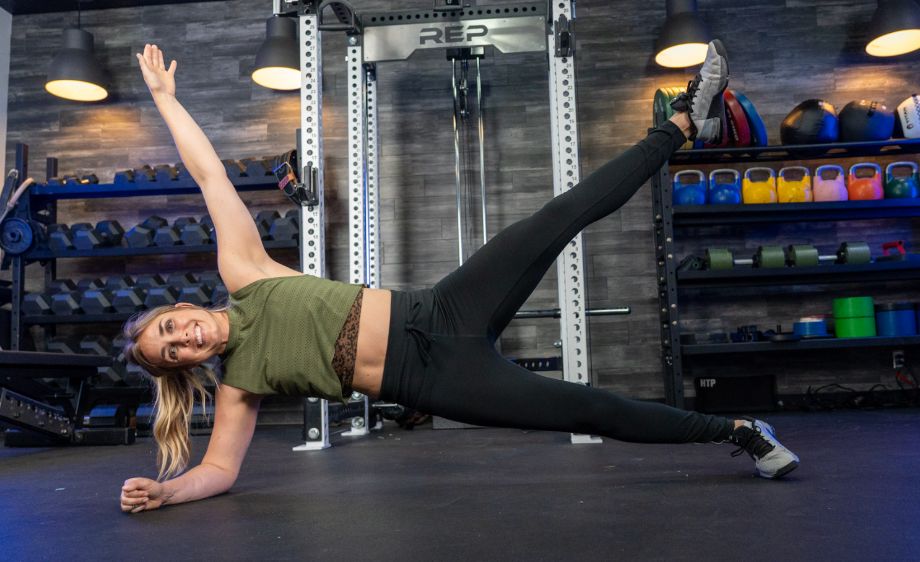We test and review fitness products based on an independent, multi-point methodology. If you use our links to purchase something, we may earn a commission. Read our disclosures.
We’ve all been there, propped up on our forearms, trying to think about anything other than the excruciating pain in our abs and whether or not you’re close to the end of the timer. You look down, and—
Are you kidding me? It’s only been 10 seconds?! How!?
There has to be a better way to build core strength and stability than to subject yourself to planks day after day.
Well, the plank is among the best ab exercises. Luckily, there are plenty of variations to shake things up when you’re at your wits’ end and refuse to spend another second in the front plank position.
Today, we’re serving up 13 plank exercises that’ll provide you a much-needed relief from the tedium of your current plank workout, all without sacrificing that trademark plank effectiveness.
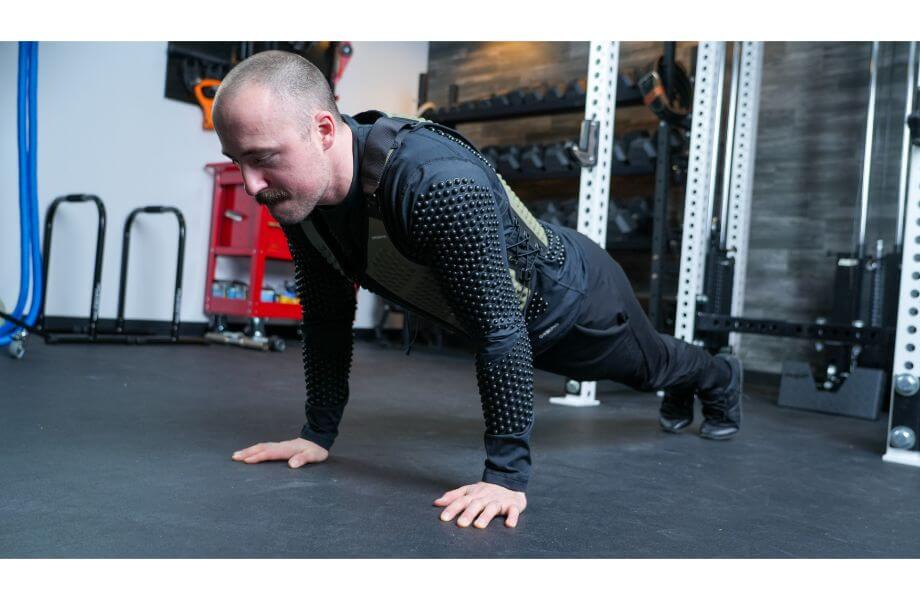
What Is a Plank?
The plank exercise is the quintessential isometric exercise for your core, which involves getting into the push-up position then dropping down so your forearms, wrist to elbow, are touching the floor.
And that’s it!
You just sit there, forming a straight line from head to toe, while contracting your core muscles, as well as many other muscle groups. It sounds simple, but anyone who’s planked for more than a few seconds knows that things get tough, and fast!
That’s why beginners often modify the movement by staying in the push-up position and holding tension from a higher position, thus the name “high plank.”
Our guide today will cover 13 more variations to the popular ab exercise, so you can make doing planks fun!
Benefits of Plank Exercises
We don’t subscribe to the idea of “spot reduction,” or the belief that performing ab exercises will specifically target and burn belly fat and reveal the ever-elusive “six-pack.”
Numerous studies have debunked this myth, including this 2011 study published in the Journal of Strength and Conditioning Research1 and this 2015 study published in the Journal of Manipulative and Physiological Therapeutics2.
So, what gives? Why bother with planks?
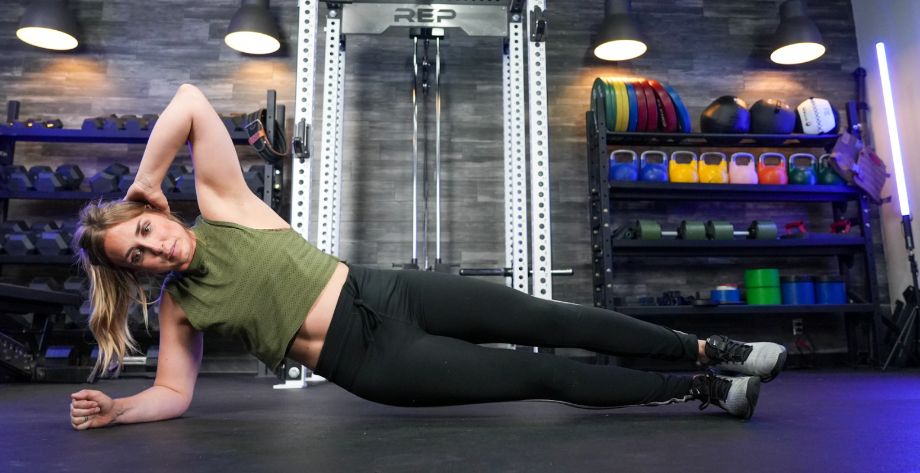
Build a Strong Core
Planks help you build a stronger core, which translates to enhanced athletic performance and an easier time performing everyday tasks. A strong core also contributes to pain relief and injury prevention.
A 2015 study published in the Journal of Strength and Conditioning Research3 compared the effects of isometric exercises, specifically the plank, versus dynamic training. The study determined that “an isometric training approach was superior…[which] is important since increased core stiffness enhances load bearing ability,” which could contribute to “back and knee injury reduction.”
RELATED: Core Exercises Equipment
Reduce Back Pain
Another study, published in the Journal of Orthopaedic and Sports Physical Therapy4 in 2022, found that an exercise program that included core-based exercises, like the plank, were effective for reducing chronic low back pain.
Improve Balance and Mobility
A 2016 study published in Neurorehabilitation and Neural Repair5 determined that “core stability training has beneficial effects on trunk function, standing balance, and mobility in stroke patients,” making it viable for use during stroke rehabilitation.
There are a lot of benefits to doing planks, even if they don’t guarantee you’ll get a six-pack out of it. That said, planks do target and strengthen the rectus abdominis, the muscle responsible for a pronounced six-pack appearance.
That means planks don’t not give you a six-pack; they’re just part of a bigger picture.
RELATED: Lower Ab Workouts
13 Best Plank Exercises & Variations To Try
We’re going “out with the old, in with the new,” so forget those boring front planks and get ready to add a little color into your core workouts!
Here are 13 plank variations to provide you a plethora of core strengthening benefits, as well as what makes each great and how to do them with proper form.
- Side Forearm Plank
- Side Star Plank
- Plank Pull-Through
- Plank Jacks
- Plank Toe Taps
- Plank Shoulder Taps
- Plank Up-Down
- Push-Ups
- Lateral Plank Walk
- Plank Reach
- Side Plank Hip Dips
- Side Plank Crunch
- Side Plank Twist
1. Side Forearm Plank
Why it’s great: Side planks provide activation in your abdominal muscles, including the rectus and transverse abdominis, the obliques, and the often-neglected quadratus lumborum.
How to do it:
- Lie on your left side with your knees straight and your elbow beneath your shoulder.
- Prop your body up using your left arm, raising your right hand toward the ceiling.
- Brace your core, raise your hips, and hold for time.
- Flip over and do the same thing with your right arm on the floor and your left hand raised instead.
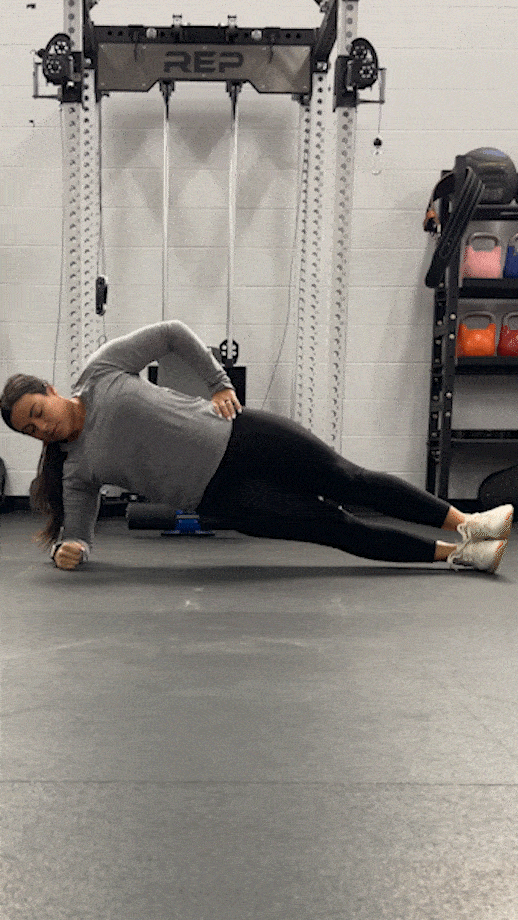
2. Side Star Plank
Why it’s great: Take your standard side plank and raise your leg to form a star shape. This advanced move increases muscle activation, provides additional balance challenges, and looks pretty sweet too!
How to do it:
- Get into your standard side forearm plank position, keeping your feet stacked on top of one another.
- Raise your top leg into the air, forming about a 45-degree angle between the two legs.
- Hold the position, then come back down and rest.
- Switch sides and repeat.
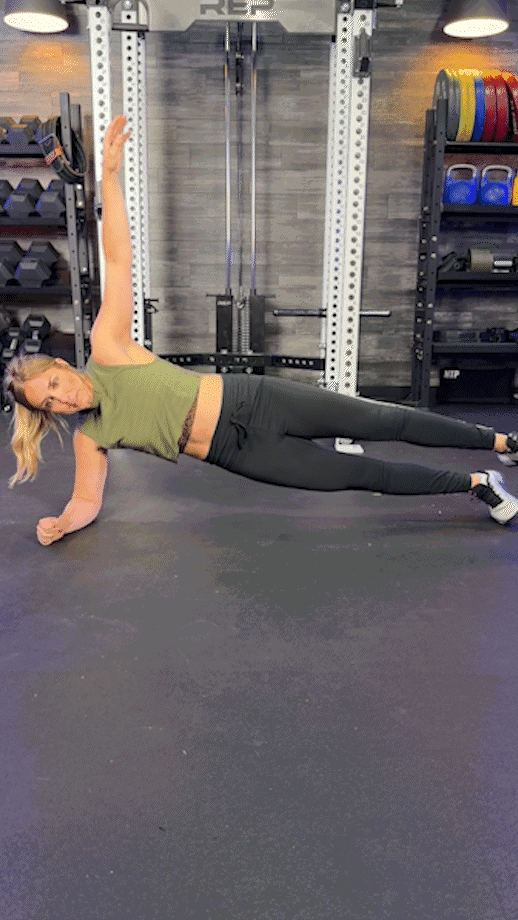
3. Plank Pull-Through
Why it’s great: Adding in a free weight and simple pull-through motion to the standard plank adds an increased challenge to your targeted muscles, including the glutes, hamstrings, shoulders, biceps, and back muscles.
How to do it:
- Select a dumbbell or kettlebell and place it on the floor just outside your right shoulder.
- Get into a high plank, then reach underneath your body to grab the dumbbell with your left hand.
- Move the weight from the right side to the left side while holding the plank.
- Return to the starting position with your hands, then reach over again with your right hand and move the weight back from the left side to the right.
- Repat for the desired number of reps.
RELATED: Best Kettlebells
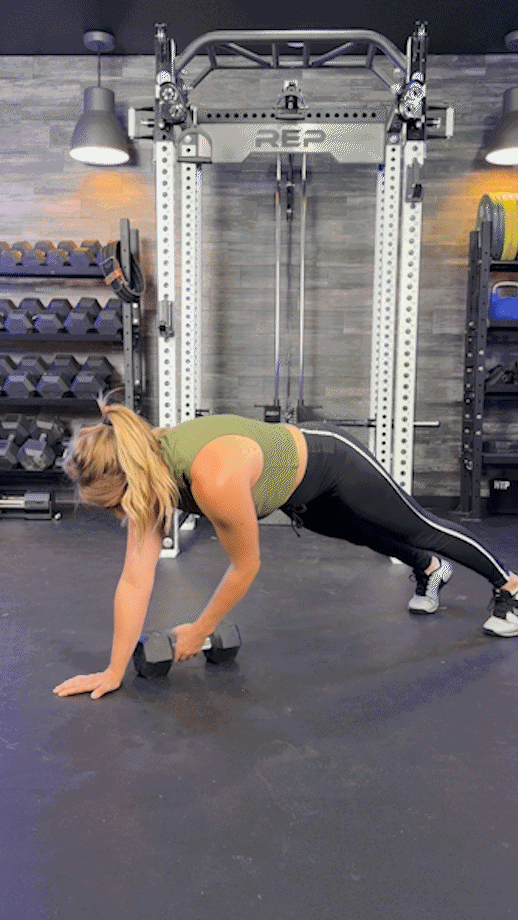
4. Plank Jacks
Why it’s great: Like mountain climbers, plank jacks incorporate movement to produce a cardio stimulus and enhance results. They also target numerous muscles, making them a great lower back exercise while still working the rectus and transverse abdominis and obliques.
How to do it:
- Get into your standard front plank position.
- Kick out both feet as though you’re doing jumping jacks.
- Bring them back together.
- Repeat as needed.
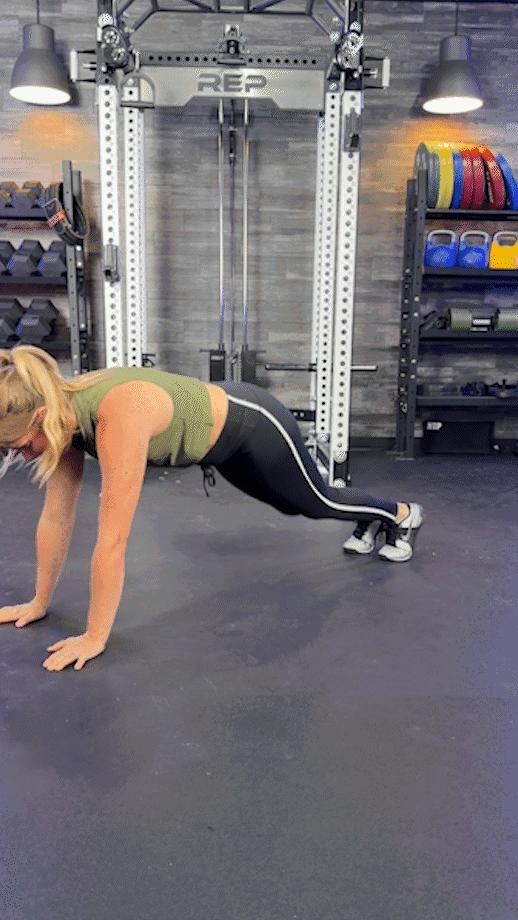
5. Plank Toe Taps
Why it’s great: Plank toe taps are kinda like plank jacks in that you’re bringing your legs out to the sides. The key distinction is that you’re now doing one leg at a time, requiring more control.
How to do it:
- Get into your standard front plank position.
- Bring your left leg out to the side and tap your toe on the floor, then bring it back.
- Do the same thing for your right leg, tapping your right foot, and return.
- Repeat as needed.
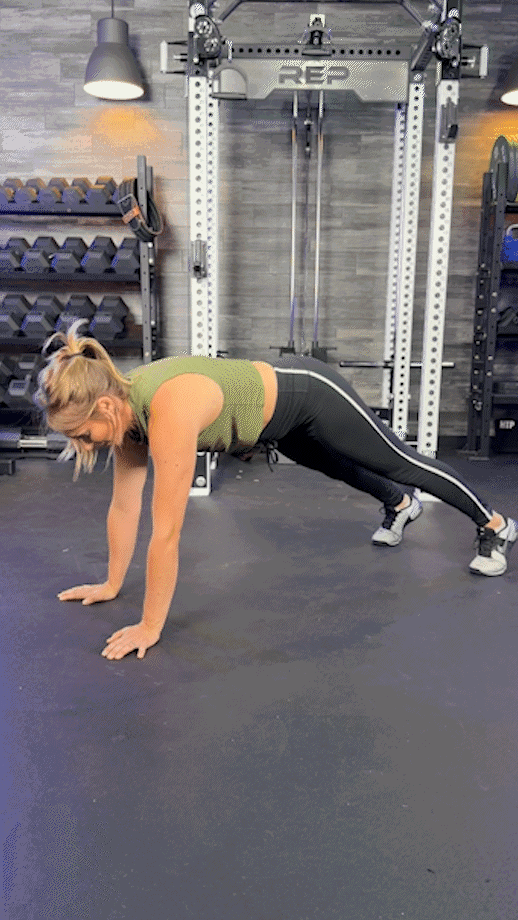
6. Plank Shoulder Taps
Why it’s great: Plank shoulder taps are excellent for activating your posterior chain muscles, like the quads, glutes, and hammies, as well as your core, biceps, and triceps.
How to do it:
- Get into a high plank position.
- Tap your left shoulder with your right hand, keeping the left hand on the floor.
- Come back to the starting position, now tap your right shoulder with your left hand.
- Repeat as needed.
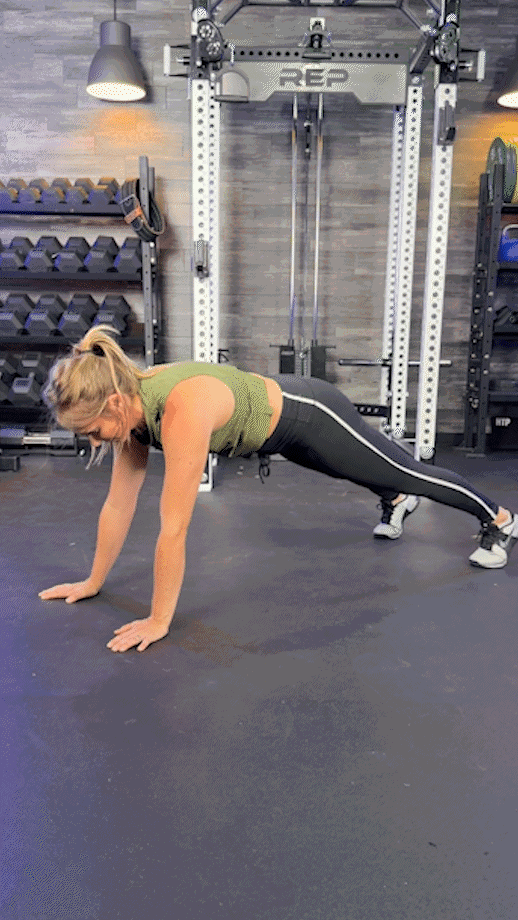
7. Plank Up-Down
Why it’s great: Plank up-downs target all the usual muscles while adding movement. They’re also super versatile because you can alternate which limb moves first during each phase.
How to do it:
- Start in the high plank position.
- Drop down onto your right elbow, then drop onto your left elbow.
- You’re now in a regular forearm plank.
- To return to the high plank, you can do the same order, starting with the right and following with the left, or you can reverse it by planting your left hand first then doing your right hand.
- You may repeat the same movements, or you may alternate and start with your left side on the next rep. It’s up to you.
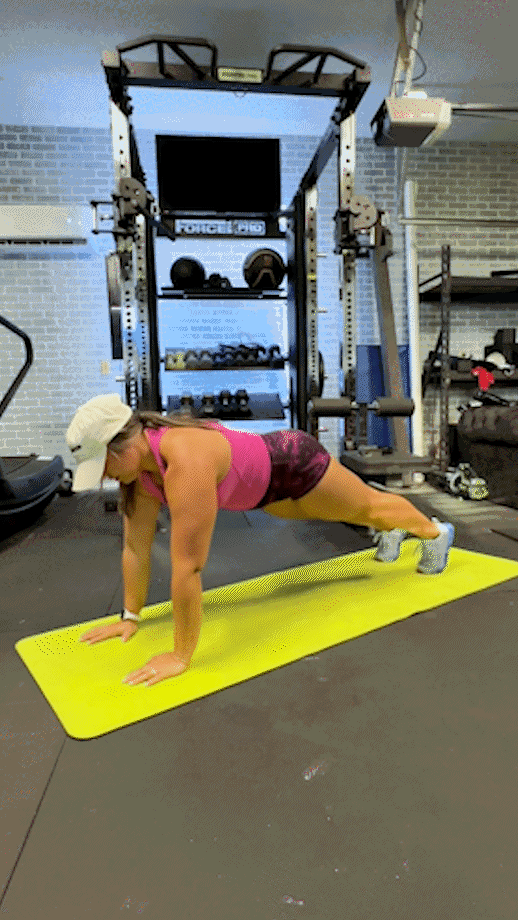
8. Push-Ups
Why it’s great: The push-up is hands down one of the best bodyweight compound exercises available. It hits all the spots you’d hit with a plank and then some, making it an overall more impactful exercise.
How to do it:
- Get into the high plank position.
- Tighten your core, breathe in, and lower your body to the floor. Your chest should touch the floor, ideally, but don’t lose tension at the bottom.
- Push yourself back up, exhaling as you push.
- Repeat as needed.
RELATED: What Muscles Do Push-Ups Work?
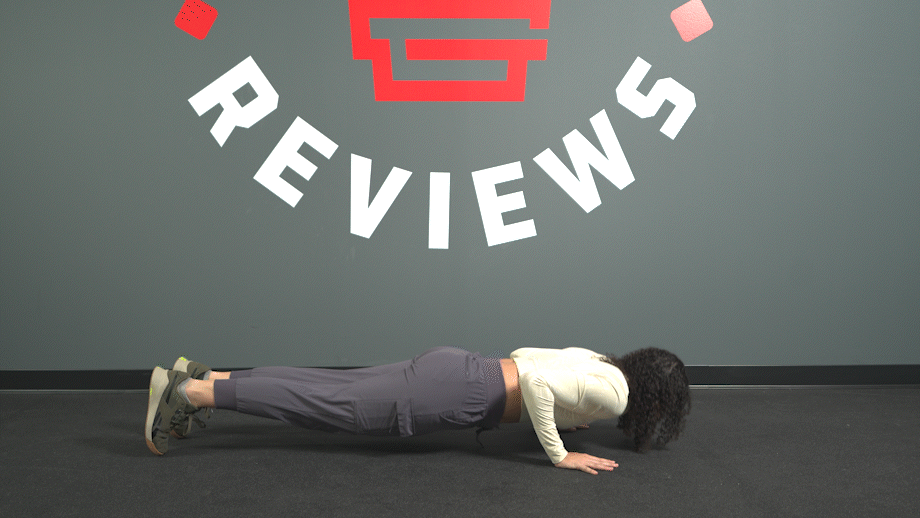
9. Lateral Plank Walk
Why it’s great: The lateral plank walk requires you to sashay sideways across a room while holding a high plank. The inclusion of movement challenges your balance, while the movement itself is a great oblique workout.
How to do it:
- Get into a high plank position.
- “Take a step” by moving your right hand and right foot to the right.
- Move your left hand and left foot next, returning to the original high plank position.
- Repeat for the desired number of reps or until you’ve reached the desired distance, then do the same set leading with the left side now.
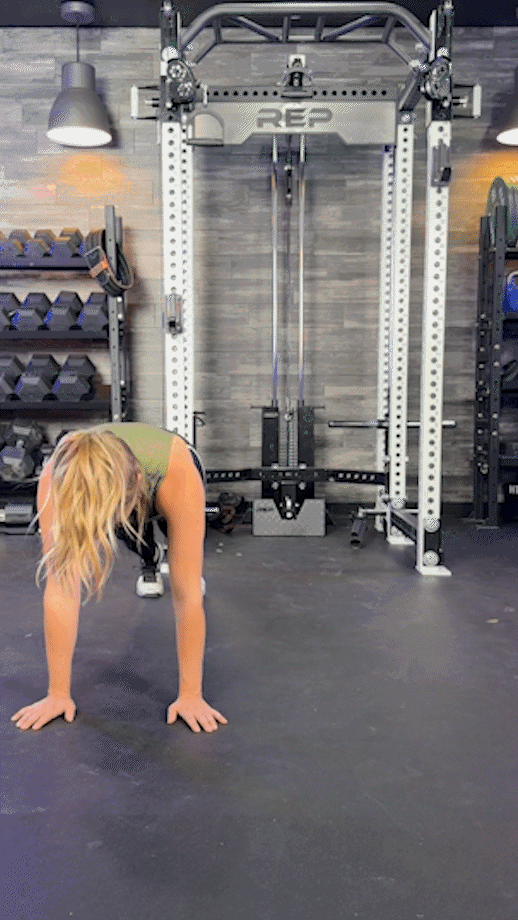
10. Plank Reach
Why it’s great: Reaching overhead during your plank provides the same great core activation while improving shoulder mobility and flexibility as well.
How to do it:
- Get into a regular forearm plank.
- Reach one arm over your head in a full extension.
- Place it back down, now repeat for the other side.
- Repeat as needed.
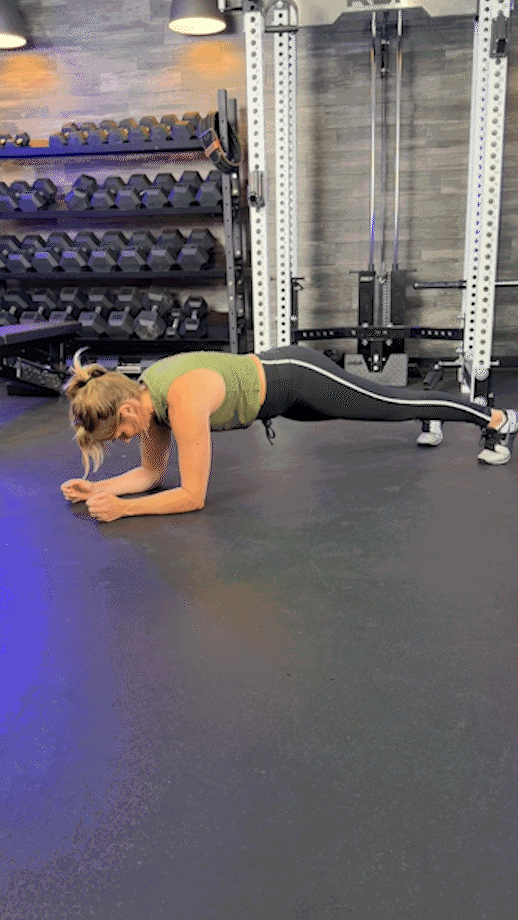
11. Side Plank Hip Dips
Why it’s great: Like the regular side plank, you’re hitting the obliques a little harder, but the movement enhances the effect, making hip dips a good variation to the vanilla side plank.
How to do it:
- Get into your regular side plank position.
- Let your hips dip down, almost touching the floor.
- Pop them back up, repeat for the desired number of reps, then switch sides.
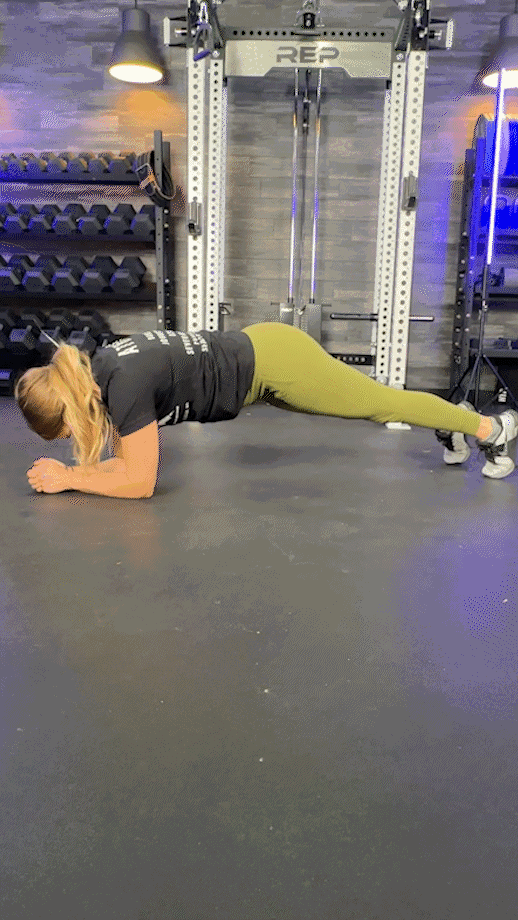
12. Side Plank Crunch
Why it’s great: Like sit-ups, the side plank crunch adds a crunching movement for increased muscle activation. You’ll also hit the upper back, shoulders, and external obliques.
How to do it:
- Get into the side plank position.
- Bring the elbow of your free arm toward your leg, simultaneously bringing the top leg up towards your elbow so the knee and elbow may lightly touch.
- Return to the starting position.
- Repeat as needed.
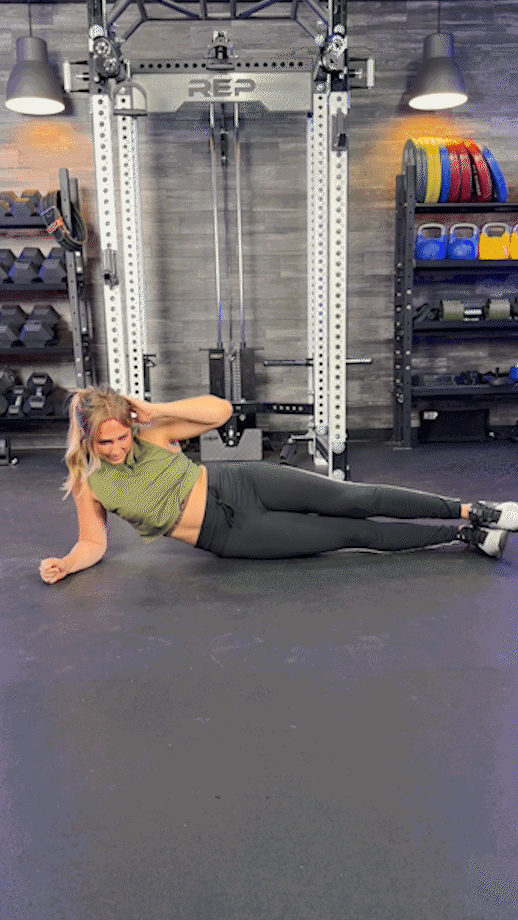
13. Side Plank Twist
Why it’s great: Channel your inner Chubby Checker and do the twist, activating your abs, obliques, glutes, and quads in one fell swoop.
How to do it:
- Get into your side plank
- Place your free hand behind your head.
- Pulling your bellybutton to your spine, rotate your torso, bringing the elbow underneath the body towards the floor.
- Come back to the starting position, repeat as needed, then switch sides.
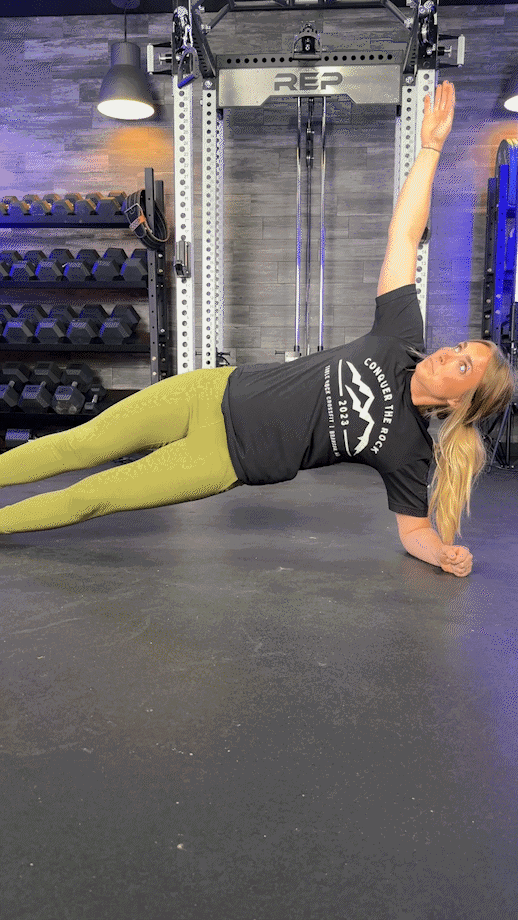
Final Thoughts: Plank Exercises
We’d never disparage the tried-and-true front plank, but it can be monotonous at times.
That’s why performing a plank variation, like the ones listed above, or adding a little movement to the exercise helps provide similar activation in all the right places, all while making things just a little more interesting.
After all, fitness is hard work, but there’s no reason it can’t be fun too! Try some of our picks during your next plank workout and make doing planks fun again!
FAQs: Plank Exercises
What happens if I do planks every day?
The plank is a gentle enough exercise that you won’t experience extreme soreness from holding one every day. In fact, you may find that you build up significant endurance in the movement, enabling you to hold the position for longer and longer.
Does planking build abs?
Planks provide excellent activation to the core muscles, including the abdominals.
A 2017 study published in the American Journal of Physical Medicine & Rehabilitation6 observed activation in the “upper rectus abdominis, lower rectus abdominis, external oblique, [and] lumbar erector spinae” in eight different isometric plank variations.
That means planks make a great tool for increasing abdominal muscle size, strength, and endurance, but they shouldn’t be the only exercise you do.
To put things into perspective, a 2018 study published in the Journal of Human Kinetics7 compared core muscle activation during the plank versus a 6-RM set of heavy back squats.
The back squat set produced similar EMG activation in the rectus abdominis and external obliques, but “greater erector spinae activation,” leading researchers to conclude that “high-intensity squats rather than isometric low intensity core exercises for athletes would be recommended.”
Put simply, doing planks is effective in building abs, but it should be part of a comprehensive program that supports building core strength and stability in other ways.
Your core training should include much more than just direct ab training exercises. Period.
How long should a beginner hold a plank?
A 2022 study published in the International Journal of Exercise Science8 observed the greatest increases in core muscle thickness at 3-minute intervals, but 3 minutes is a really long time to hold a plank!
Beginners should start out with only about 10 to 20 seconds at a time, listening to their body and resting as needed. Starting with the high plank rather than the regular forearm plank is not a bad idea either.
For personalized advice, consider working with a certified personal trainer.
References
1. Vispute SS, Smith JD, LeCheminant JD, Hurley KS. The effect of abdominal exercise on abdominal fat. J Strength Cond Res. 2011;25(9):2559-2564. doi:10.1519/JSC.0b013e3181fb4a46
2. Kordi R, Dehghani S, Noormohammadpour P, Rostami M, Mansournia MA. Effect of abdominal resistance exercise on abdominal subcutaneous fat of obese women: a randomized controlled trial using ultrasound imaging assessments. J Manipulative Physiol Ther. 2015;38(3):203-209. doi:10.1016/j.jmpt.2014.12.004
3. Lee BC, McGill SM. Effect of long-term isometric training on core/torso stiffness. J Strength Cond Res. 2015;29(6):1515-1526. doi:10.1519/JSC.0000000000000740
4. Fernández-Rodríguez R, Álvarez-Bueno C, Cavero-Redondo I, et al. Best Exercise Options for Reducing Pain and Disability in Adults With Chronic Low Back Pain: Pilates, Strength, Core-Based, and Mind-Body. A Network Meta-analysis. J Orthop Sports Phys Ther. 2022;52(8):505-521. doi:10.2519/jospt.2022.10671
5. Haruyama K, Kawakami M, Otsuka T. Effect of Core Stability Training on Trunk Function, Standing Balance, and Mobility in Stroke Patients. Neurorehabil Neural Repair. 2017;31(3):240-249. doi:10.1177/1545968316675431
6. Calatayud J, Casaña J, Martín F, Jakobsen MD, Colado JC, Andersen LL. Progression of Core Stability Exercises Based on the Extent of Muscle Activity. Am J Phys Med Rehabil. 2017;96(10):694-699. doi:10.1097/PHM.0000000000000713
7. van den Tillaar R, Saeterbakken AH. Comparison of Core Muscle Activation between a Prone Bridge and 6-RM Back Squats. J Hum Kinet. 2018;62:43-53. Published 2018 Jun 13. doi:10.1515/hukin-2017-0176
8. Aleais DAS, Sullivan K, Ferreira P, Marchetti PN, Marchetti PH. Acute Dose-Response of Duration During the Isometric Forearm Plank Exercise on Muscle Thickness, Echo-Intensity, Peak Force, and Perception of Effort in Recreationally-Trained Participants. Int J Exerc Sci. 2022;15(6):676-685. Published 2022 May 1.
Further reading

In this Iso Leg Press and Hack Squat Machine review, we’ll take a look at this overbuilt machine to see how much value it can bring to your home gym. Read more

Bilateral exercises are great, but unilateral exercises have their perks too. Let’s not pick sides; check out our unilateral training guide right here! Read more

Titan Fitness is known for making budget-friendly home gym equipment. However, wading through the vast amount of equipment they sell and determining which is worth buying and which isn't can be difficult. We've used, arguably, more gear from Titan Fitness than anyone in the world (other than employees of the company) and are taking our experience as well as others to provide recommendations on the best equipment available from Titan. Read more

he benefits of glutamine are impressive, but should you add it to your supp stack? A dietitian weighs in on if it deserves a spot in your pantry. Read more

